AC72s Rudder ‘Elevator’ Dispute: Technical Analysis by Doug Schickler

 To balance my opinion as a fan on this AC34 edition I contacted Doug Schickler from ‘Schickler Tagliapietra Yacht Engineering & Design Studio’ www.styacht.com
To balance my opinion as a fan on this AC34 edition I contacted Doug Schickler from ‘Schickler Tagliapietra Yacht Engineering & Design Studio’ www.styacht.com
 Doug has been following actively this edition developments and lately these last minutes safe recommendations and specially those affecting Design changes.
Doug has been following actively this edition developments and lately these last minutes safe recommendations and specially those affecting Design changes.
Below his complete analysis focusing on the technical aspects, as for those emotional opinions you already have mine…
In short the Regatta Director, Ian Murray, has implemented 37 safety recommendations that include two key changes affecting ruddder winglets/elevators design, size (check comparative image below) , trimming & performance, to “..avoid pitch poles..” (sic) .
Team New Zealand has protested these two specific design rules. Common sense says that statement is rather naive at this time, and it is too late to implement design changes 4 days before the racing begins.
In this doc Doug Schickler goes dissecting these new rules in detail and their implications.
Also check his external links to Loick Peyron’s description of Artemis pitch , Dean Barker view published yesterday, and linked AC34 documentation. All Images ACEA / Giles Martin Raget, click to enlarge.//
—————————————————–
—————————————————–
—————————————————–
Rudder Dispute Analisys by Doug Schickler from ‘Schickler Tagliapietra Yacht Engineering & Design Studio’ www.styacht.com / PDF copy can be found Here
“The editor of Catsailingnews.com asked me to review the late stage changes to the design rule. This is an attempt to separate the technical matters from the more emotional. The idea is to understand and parse the rule changes, how they matter to the safety of the yacht as well as to its performance. Words like sportsmanship, cheating and fairness are not part of this discussion. The authority of any particular party involved in this cycle, relative to the Deed of Gift, the Protocol or any other document will not be addressed. Please note that elevator and stabilizer are used interchangeably.
Some background is useful. ST is a design and engineering partnership, founded by Doug Schickler and Davide Tagliapietra in the period of the 32nd America’s Cup in Valencia. Throughout the span of time from the end of the 32nd to now, we have remained close to the design and engineering details, and have taken a particular interest in the nature of the class rules used in the AC. Our professional experience with multihulls, cruising and racing, and with foiling craft has been peaking of late, offering a good chance for comparison.
We were both colleagues and friends of Bart Simpson at +39 in Valencia. His death was something we experienced with shock and distinct sorrow. I was unlucky to hear the news from SF in nearly real time. This piece is not a discussion of the loss of Artemis Racing’s first boat. It is about the choices being made as a result. A limited amount is known about how the longitudinal stability of Artemis Racing affected the outcome of that tragic day. Loick Peyron is on record in the NY Times as saying it was a capsize event in a bear away. But he hastens to point to an unacceptable structural failure as the real issue. Rudder elevator performance, at the heart of this discussion, was not part of his commentary. See https://www.nytimes.com/2013/06/28/sports/despite-fatal-training-accident-artemis-moves-forward.html But, in any case, it is clear to all observers, than nothing good comes of a pitch pole. The consequences are dire for crew and support staff.
Let’s say the story starts with the proposed
, and now essentially endorsed, safety recommendations. It is virtually certain that this list was compiled with input from all of the competitors. What proposals, if any, were not included is not known to me. Two of these safety recommendations are still subject to a protest to the International Jury at the time of writing. We could as an alternative, also start from the standpoint of the AC72 class rules as written, and/or from the interpretations published on various topics related to foiling on a big cat in the way we have seen. But that process has happened, thus far, as one would expect. The design rule was made, and then modified / interpreted numerous times for a number of reasons. An example of this would be the elimination of the “small” wing from use. Another would be PI 19, which ruled out the kind of adjustment to stabilizers being explicitly allowed now.
The Regatta Director, the GGYC, and the ACEA together made an application for an Event Permit, which included 37 safety related proposals. See https://cdn.sparkart.net/americascup/content/documents/Recommendations-22.5.13-1 To the best of my knowledge, not all of the recommendations were fully detailed at the time of the application. For example, the nature of the structural review was not clarified. Therefore, the recommendations were not carved in stone at that point.
At the time that these were first released, the recommendations were grouped as Yacht (9), Personal Equipment (7), Support Equipment (9), Race Management (12). Of the 9 related to the yacht, the third, Rudder Elevators, stood out in its specificity, raising some red flags as a result. The other controversial fifth item, Maximum Sailing Weight, is also specific, but does not amount to much if one assumes it is a margin added so all teams could add the recommended equipment without changing anything else. It also clearly gives leeway for some reinforcement if a team thinks they can strengthen the boat. I have no way to understand if any of the yachts are in any difficulty from a weight stand point relative to the rules as there have been no certificates posted on the official notice board.
The text of the third recommendation reads:
1.3. Rudder Elevators:
a) minimum total area 0.32 m2 per rudder;
b) minimum depth of elevators on rudder span of 2.1m;
c) maximum elevator span of 1.4m;
d) rudder elevators to be symmetrical in plan form and allowed to extend beyond maximum beam of the Yacht; and
e) elevators permitted to be adjusted until warning signal.
That Event Permit has now been granted. See https://noticeboard.americascup.com/wp-content/uploads/2013/06/SF-13-1035-1039.pdf It is clear reading the text of the permit that the USCG wants no part of the responsibility for safety of the event, bar that they may stop any race at any time, as they see fit. The 37 recommendations are not enumerated in the permit; there is only a statement that “Regatta Directors Recommendations” were received as part of the application. Additionally, the Permit leaves a door open to amend the application. The ACEA would be required “to immediately inform the Coast Guard if circumstances necessitate a change to any component of your safety plan” and explain. In other words, some room for revision may still be available.
Let’s start with the bigger picture of rudder elevators (stabilizers) and then break down the points. With partial or total foiling, rudder elevators have a significant stabilizing effect on the AC72. The same can be said for a lot of catamarans, A class, C class, all recent foilers, in fact. The usefulness of elevators seems, therefore, clear and self-evident. We don’t think it is even argued that stabilization of the yacht is worth all the drag they create, and with full foiling their drag is little compared to the hull coming free of the water. There are a few ways to execute such elevators, as has been seen in the fleet. Active control, adjustable but passive, and fixed passive would be my designations. The original rule was written not to eliminate any possibility of stabilizers, but to limit their articulation dramatically – fixed passive being the rule for racing.
What then is the meaning of each of the points above?
a. The minimum total elevator (stabilizer) area of 0.32m2 per rudder could be put forward as a mandate for a minimum level of the aforementioned stabilizing effect. We have no way of telling if this sub-point is a controversy for some, because we do not know the area of the solutions attempted. Certainly, a significant increase in area of the foil, beyond what is deemed necessary for the safe operation of the yacht, is just drag. This performance impact is a function of other design decisions. An analogy could be drawn from aircraft. How can a regulator determine the stabilizer area required of all 300 passenger aircraft in the absence of more information about the center of gravity, flight speed, and wing positions for example? There have been, however, no great indications from the protesting competitors that the area mandate is at the heart of the problem. Quite the opposite, the minimum area has been endorsed by ETNZ, who have protested the recommendation 1.3 overall.
b. The elevator depth on the span of the rudder of 2.1m is a similar situation. It can be instructional based on the experience of the teams who are either partially or fully foiling that a foil placed too shallow does not help the longitudinal stability enough. This is therefore to eliminate the temptation for design team to limit drag of this foil or conversely to limit the loss of rig efficiency when sailing with the leeward hull in the water but heeled. This topic has also been broached by ETNZ, and they have acceded to this point even though it makes one of their rudder sets invalid. See https://www.kiwiyachting.co.nz/dean-barkers-blog/8-days-lvc
c. Maximum elevator span of 1.4m (Note: not clear if span is tip-tip or root-tip.) This limit would seem to have the opposite motivation, at first. It would appear to impact the design for reasons other than safety. Longer thinner (high aspect ratio) foils are more efficient. So limiting span could be detrimental to those teams that may have created highly efficient stabilizers. But, limiting aspect ratio can also be in the interest of a broader range of effectiveness. Longer chords will be more resilient to non-optimum angles and speeds, generally. Another interpretation is that this section can effectively be a limit put in place to prevent extreme loading of the rudder stock when the stabilizer hits the water surface. This possibility seems unlikely, as a rudder is, by nature of its purpose, there to produce moments. It can be for the integrity of the elevator itself. The area/span combination can enforce more robust stabilizers, enhancing their ability to accept extreme loading. In other words, there can be justifications for limiting span. We have no way of determining that it affects any of the current rudder configurations.
d. Symmetric plan form and max beam exemption. This point or points is clearly more controversial. In my own commentary elsewhere, this aspect was flagged as one having less to do with safety than with performance. In fact, as it turns out, the symmetry aspect will not be enforced, at least at first. A regatta notice was issued a few days ago, essentially allowing asymmetry that is supported with calculations. This would in turn indicate that the original intent was to prevent asymmetric loading for stabilizer integrity. How can that be a realistic point of view, given that the elevator can quite easily be loaded on one side only, as the foil enters or leaves the water? This new modification to the recommendations, allowing asymmetry for now, has established some load cases for consideration. It is not known if these load cases represent a hindrance for any equipment. Probably not, it seems like a compromise.
The ability to put the stabilizer out past the maximum yacht beam can be seen as a result of the enforcement of symmetry. Any team that had chosen asymmetry did so for reasons of maximum beam, apparently. So if they needed to produce symmetric plan form, they would be seriously burdened by the maximum beam. If the symmetry is moot, as it seems now to be, it should stand to reason, and one would hope, that the maximum beam exception is also moot. It is also not known with certainty that any current yacht has a stabilizer past maximum beam. If so, it does not appear to be by much.
The argument put forth by a challenger that this step is much more dangerous for any crew that fall overboard is a bit far-fetched. Yes, it all comes down to the likelihood of being struck. Men broke their backs and were hospitalized hitting the rudders of V5 boats, fully under the boat. The idea of getting hit by any part of an AC72 rudder is truly frightening, and the ca. 40 centimeters of difference involved don’t change that fact any significant amount. If this is sincerely a concern, where is lobbying for lifelines over and above the crew restraints recently recommended?
e. Elevators adjustable up to the warning signal. This is one of the more confusing changes seen. It has perhaps also been misunderstood and vilified by commentators. This moves the rule standard from being fixed passive to adjustable passive, while many have commented as if this equals active control.
Have teams made elevators with active control? Yes it seems to be the case, motivated by testing schedules. Can this be used racing? No, that is not what the recommendations are calling for or contemplating. It can be argued that active control is even safer, though the Regatta Director stopped short of allowing or mandating active control. Such a step would not only have disrupted the imminent racing, as the equipment is not available in the short term, it would also have perhaps had a greater impact on the relative performance. So a compromise solution was taken, one that could technically still work with the wording of the class rule 8.6. Not the safest of all possibilities, but a bit safer perhaps.
Taken together with the range of winds now accepted by all the competitors, likely with some arm twisting, it seems the intent was to delay the “setting” for the given day or race. This could enhance the effectiveness of the adjustable fixed stabilizer if conditions do not change or are predictable. We think this was the intent. Likewise, it is a performance advantage to be able to optimize your setting later rather than earlier. This is a consequence, and others can and will surely debate if this was intended or not.
Correctly however, attention has been given to enforcement of using an active control elevator as a fixed passive one. How can such a fixation of an adjustment be policed? Well, in the old days the use of ballast water was also a policing issue, and it resulted in some DSQs. So too here, there are technical ways to handle this. A seal placed on the control, photographed at the warning signal with a timestamp, and checked at the finish line before it is unsealed? Some relatively practical and reliable method can be imagined.
The most striking problem with the recommendations detailed above, taken all together, is not the specifics of each detail. It is the depth of the change at this late date. It morphs into the problem of potentially forcing competitors onto the race course with untested, or under developed equipment. That would dramatically reduce the benefit that was intended. In terms of reliability, and most of all in terms of boat handling, one should walk before running.
Beyond this, the questionable call of allowing later pitch setting of the elevator has an effect on the event’s legacy. Why this compromise, for limited return, at this time, when the result could easily be a Match that is subject to debate, not to mention possible litigation after the fact?
From my point of view, the points on rudder elevators each have their plausible justifications. It is a charged topic with the injury and death of crew members as ample motivation, even if there is no certain cause and effect. It must be said that we do not have all of the facts in that regard. As an aside, for me the structural integrity of the yachts should be very much more in the limelight than the rudder stabilizer.
The intent of all the recommendations may be sound, but the effect with regard to rudder elevators ultimately incompatible. It seems with the compromise on asymmetry having been struck, and the minimum area not being hotly contested, the teams currently sailing their race boats can use their proven equipment. The key aspects being protested then are the maximum beam exclusion and the late setting of an adjustable passive setup. The former is dimensional limit change, which is not in itself a necessity, but tied to the discussion of asymmetry. The latter is viewed by me as more performance than safety, even if some safety effect is acknowledged. In my opinion, it was and is possible to create safe racing yachts with the original rules as written, amended and interpreted, and that is what should be done. Moreover, I think if the International Jury rules in that way, the Event Permit leaves some latitude to make it so”.
Doug Schickler for Catsailingews.com 01-07-2013
‘Schickler Tagliapietra Yacht Engineering & Design Studio’ www.styacht.com


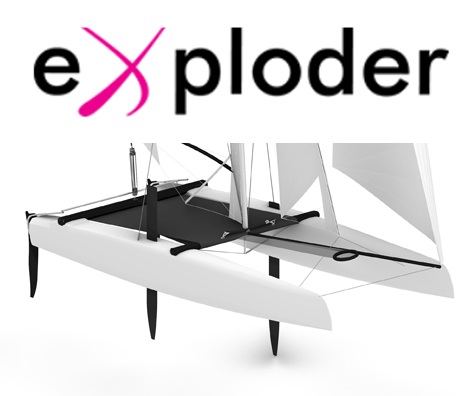
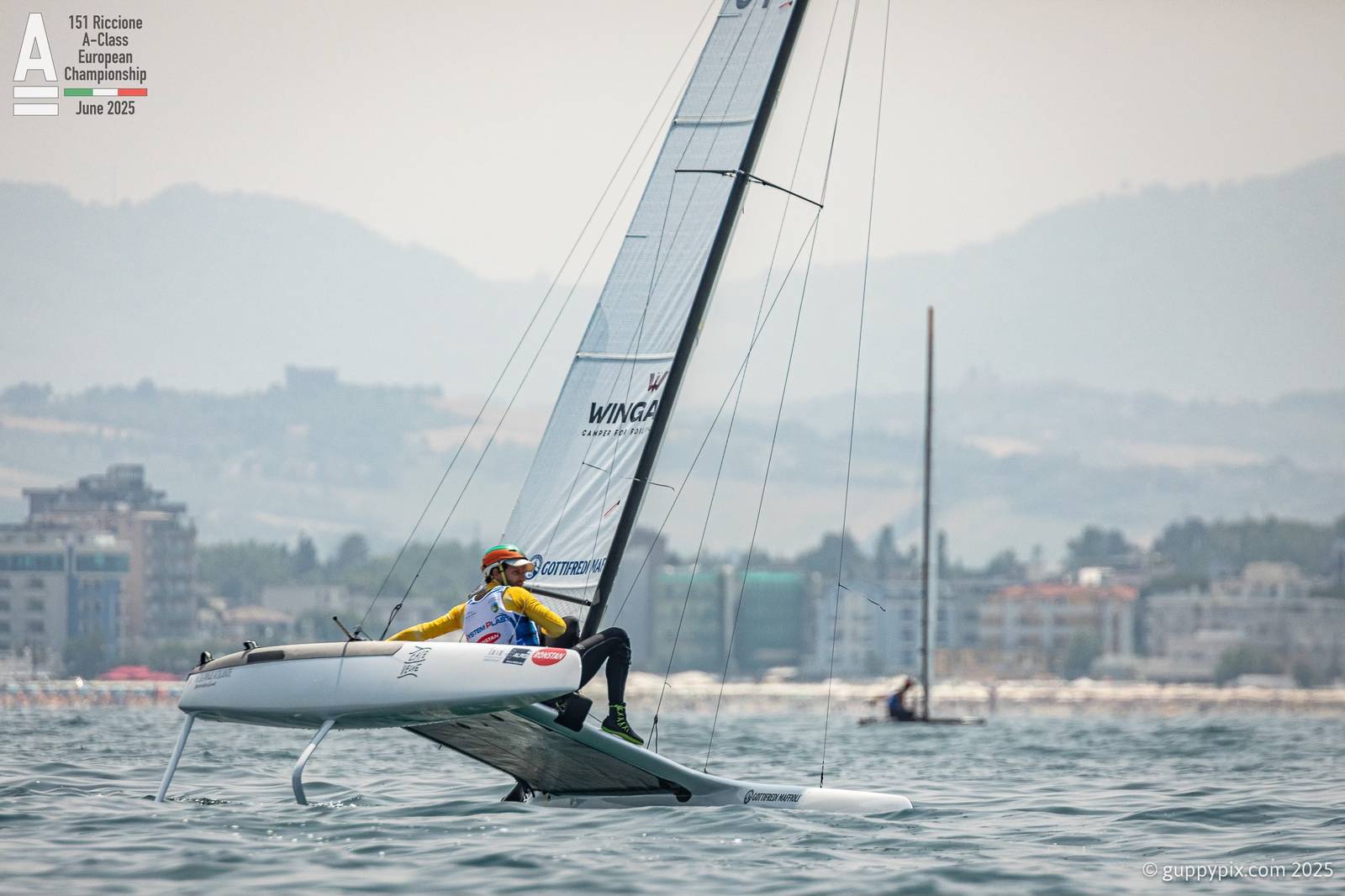
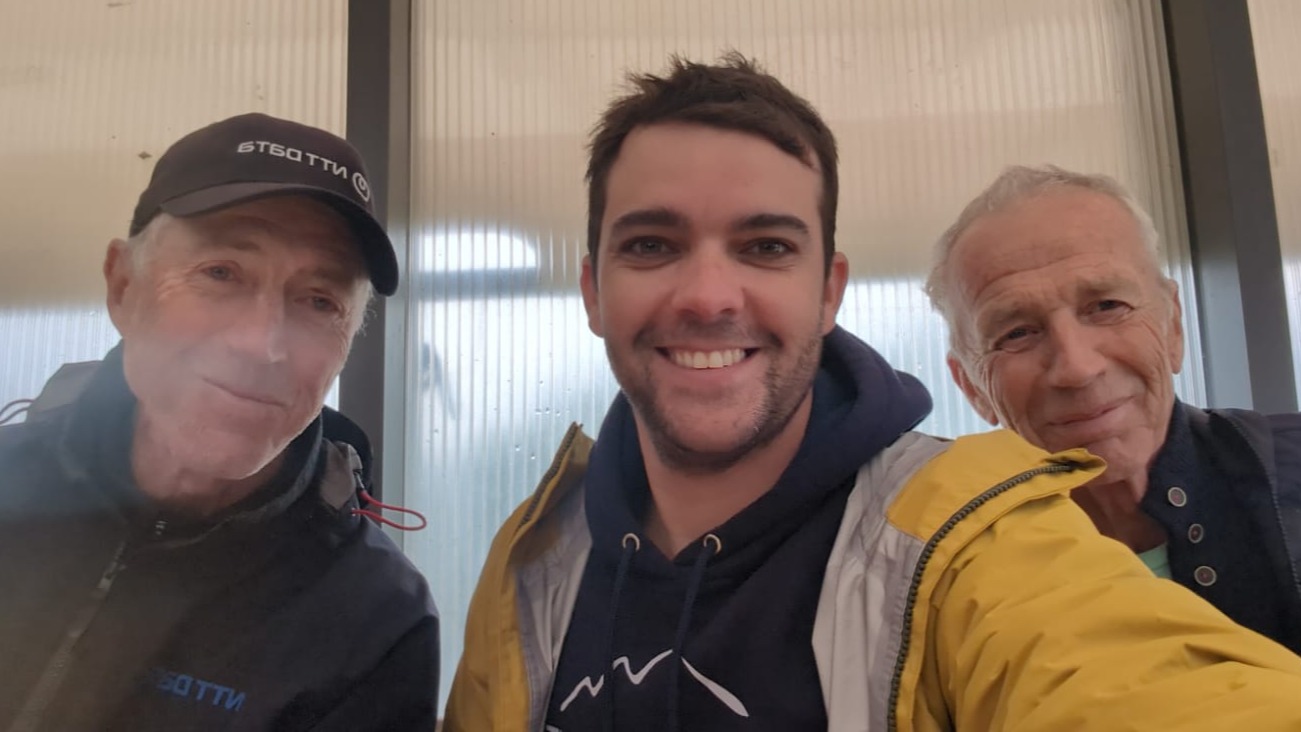
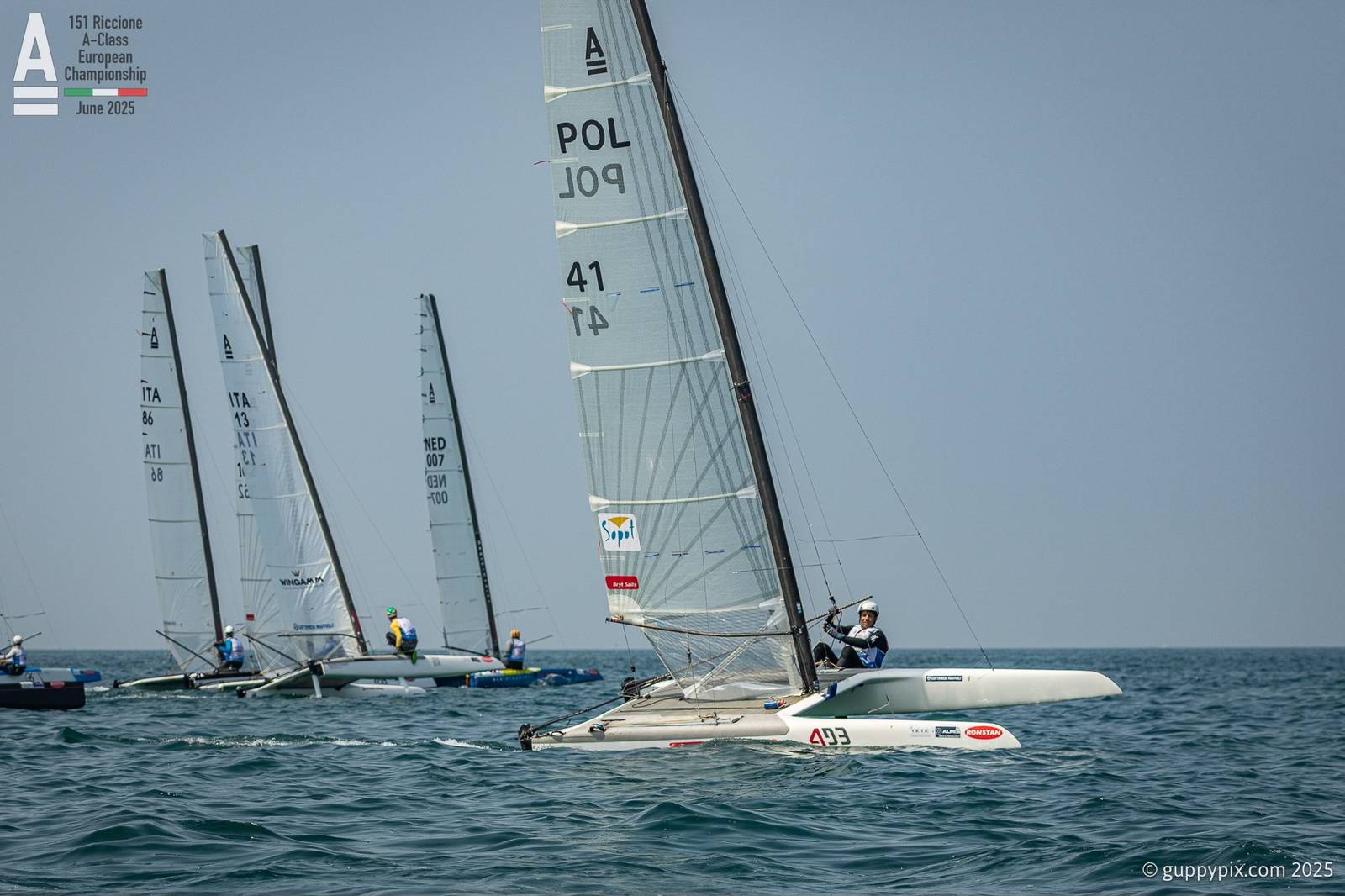
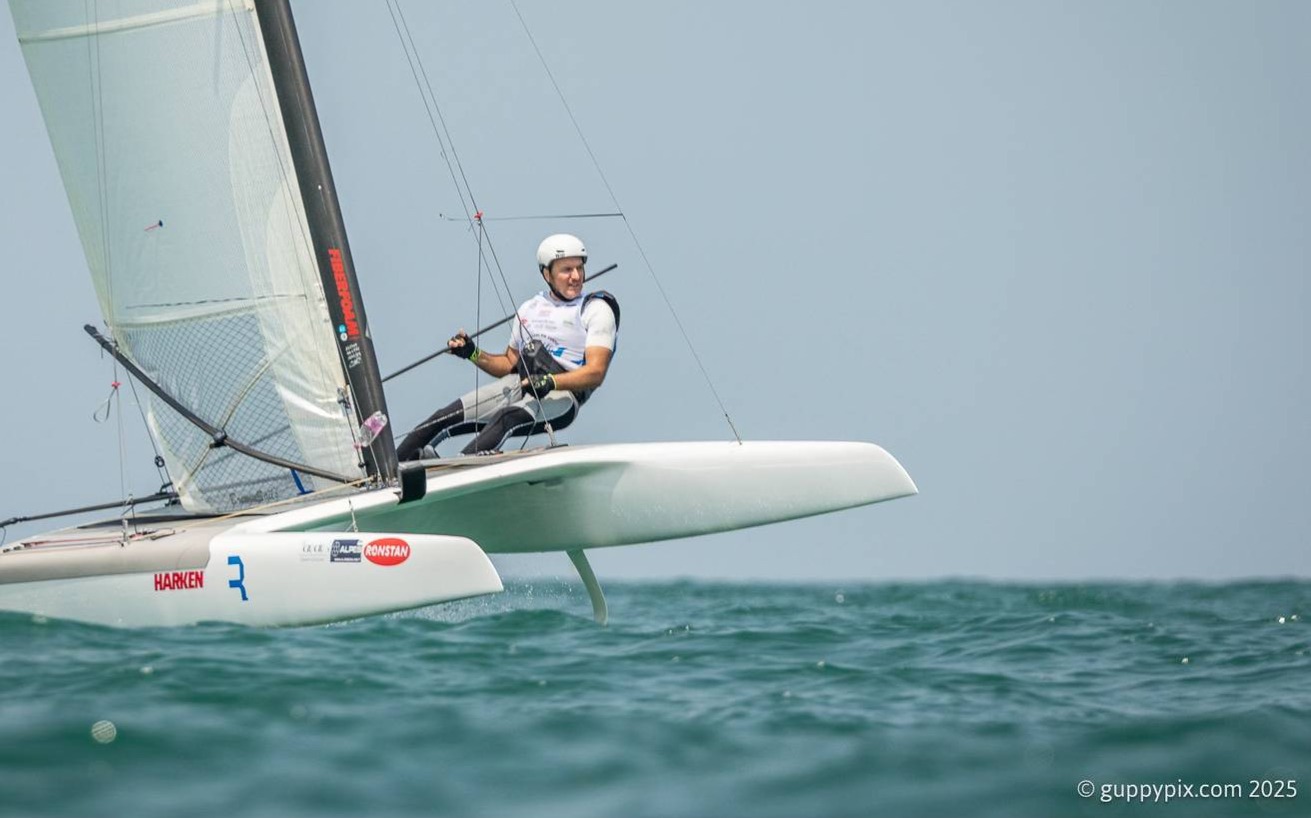
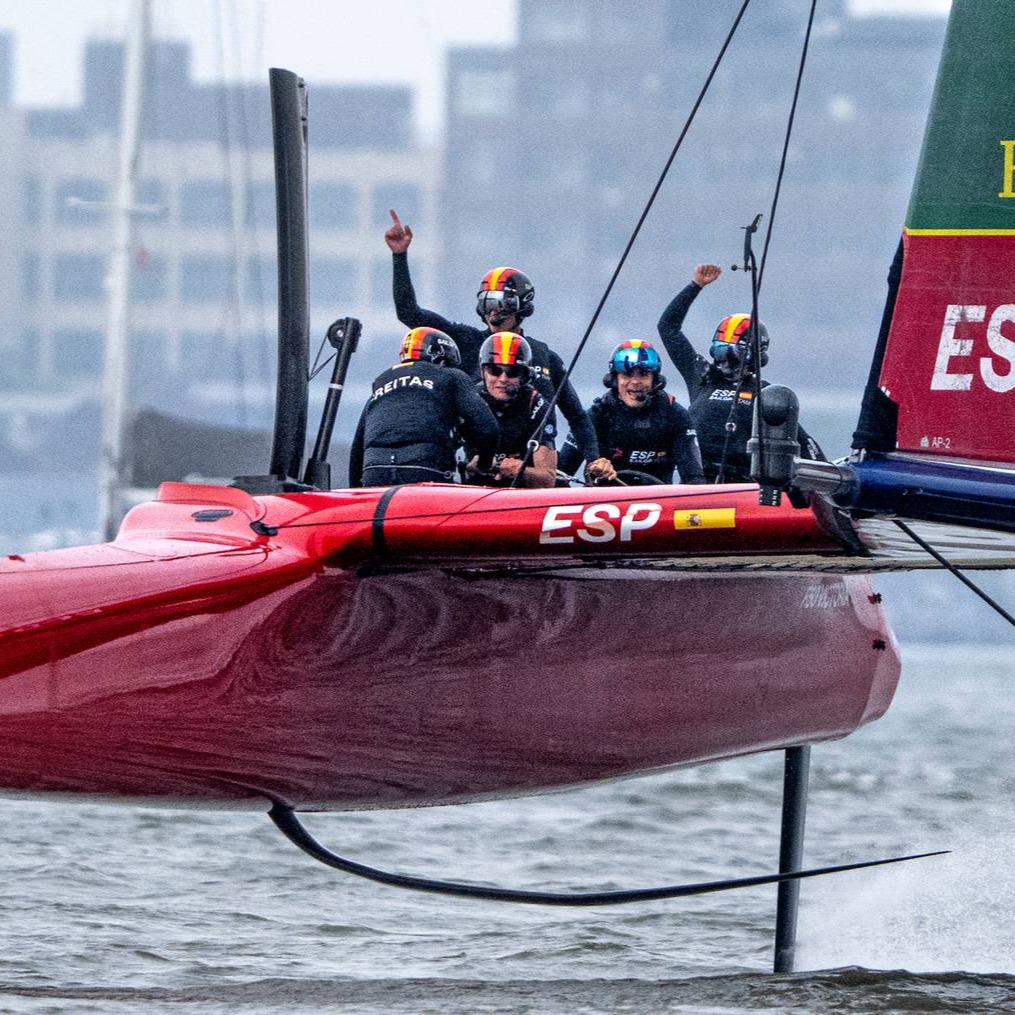
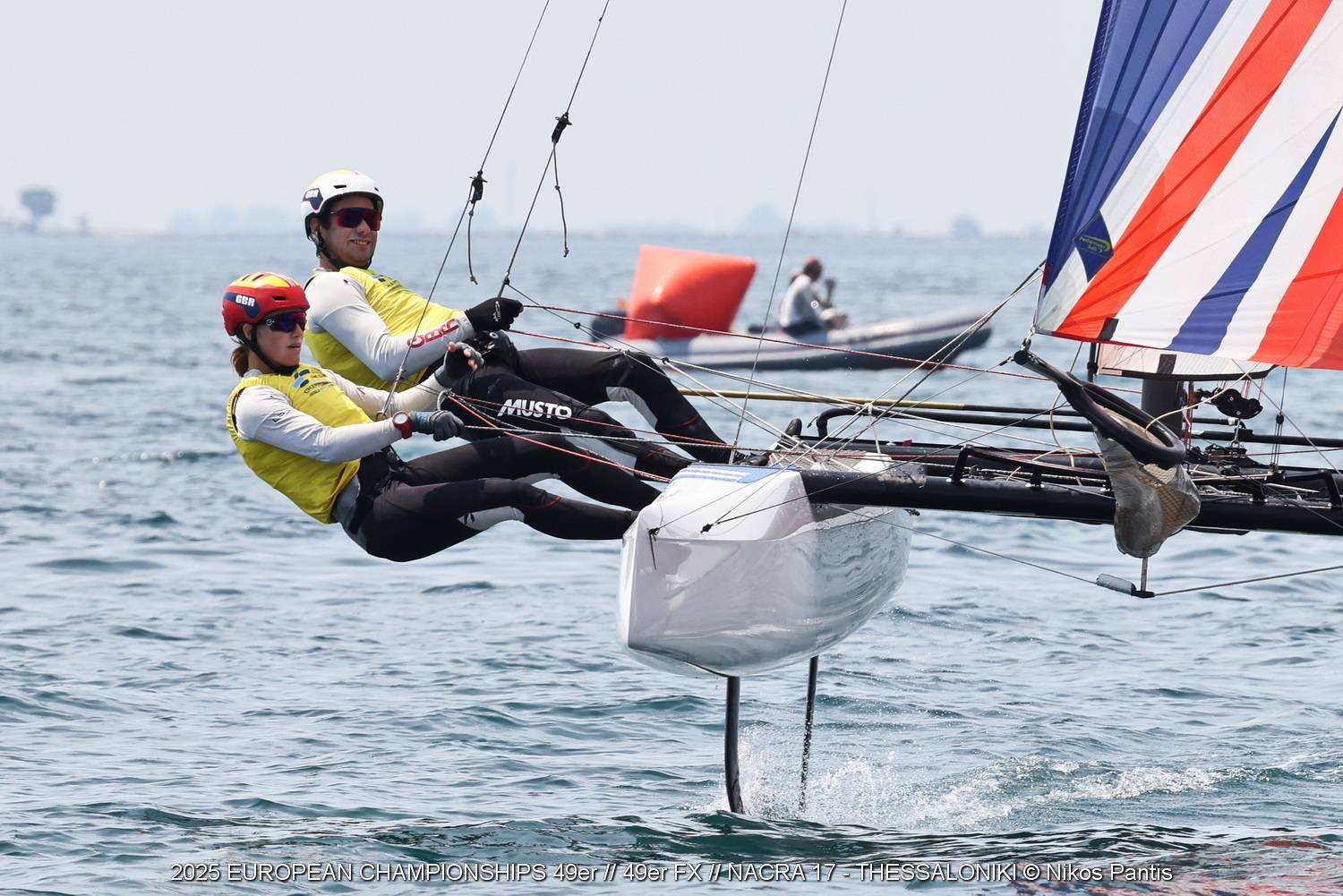
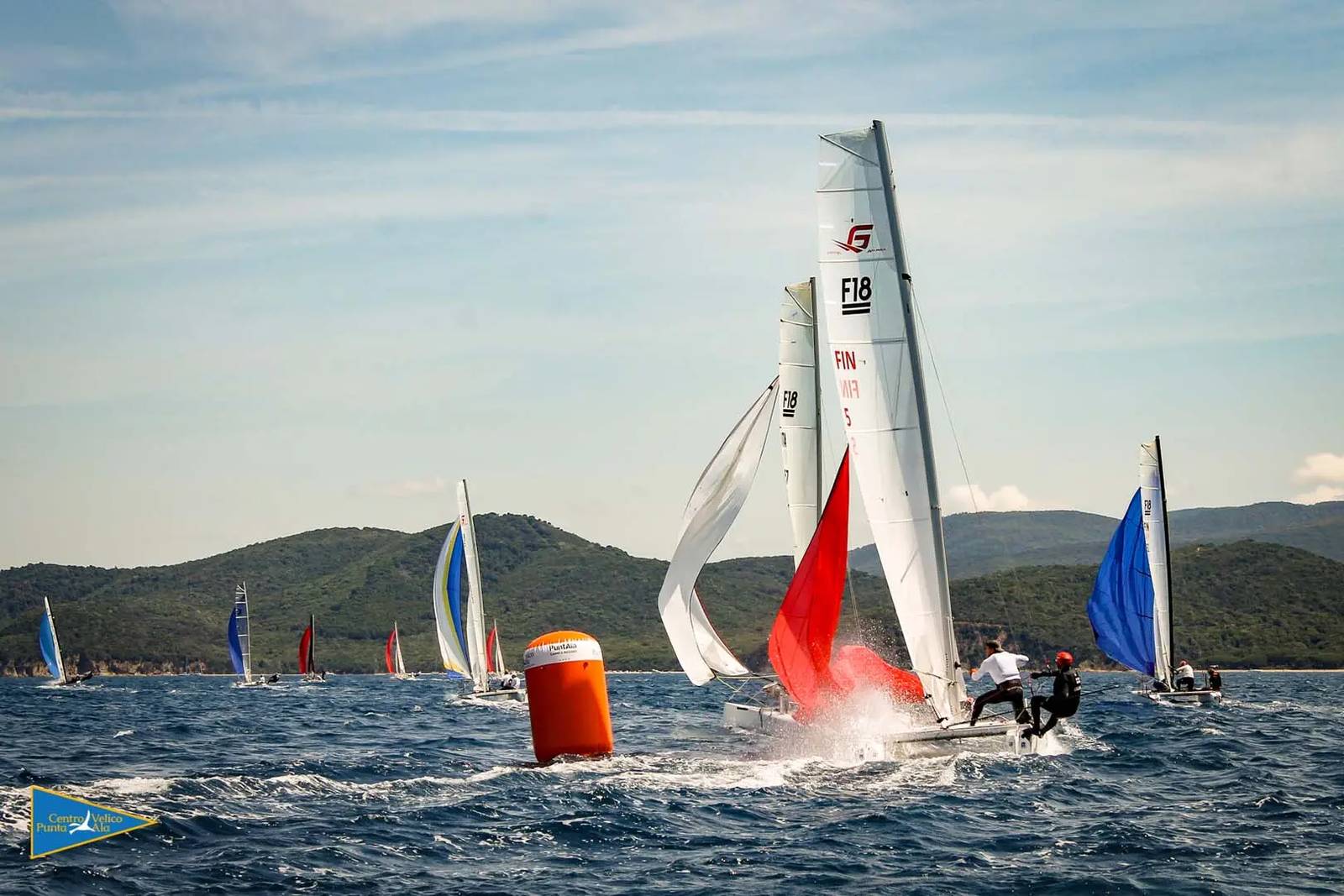
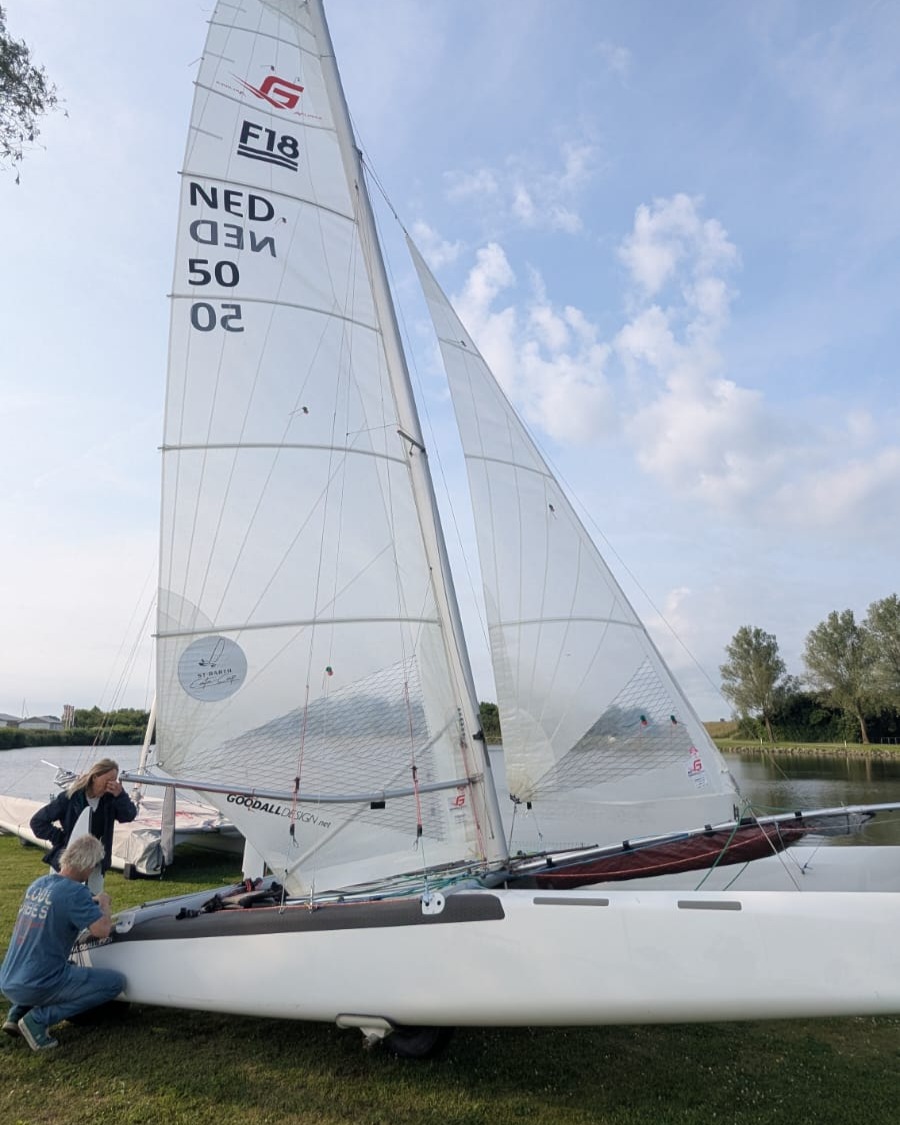
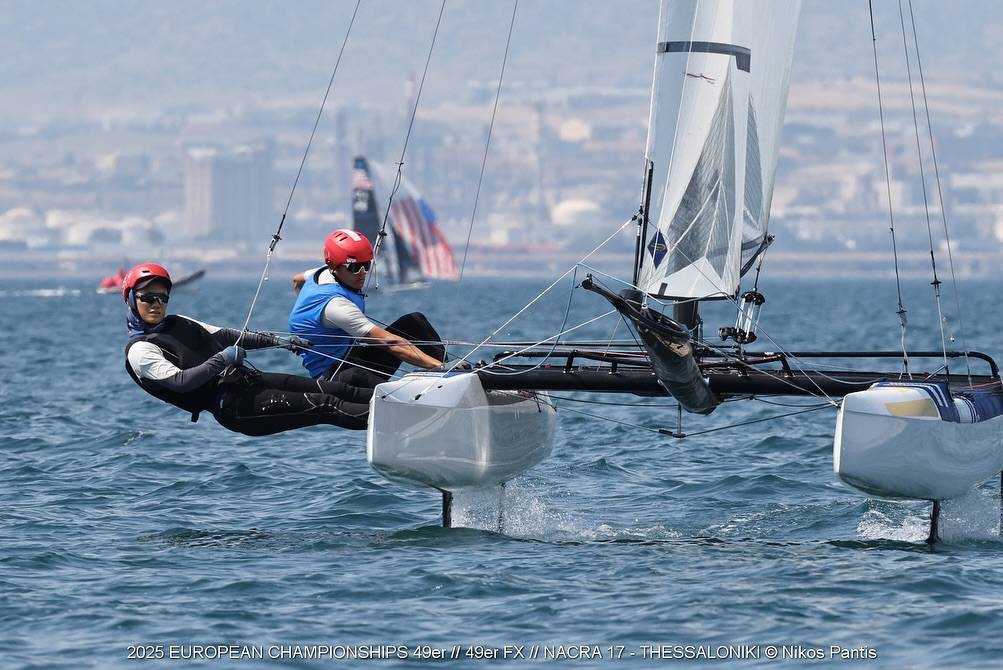



















What a great article, once again. Thanks for the interview!
Hi,
I wanted to add to my piece something I missed on the first release, brought to our attention by Max Sirena. The "REDLINE" of the class rule changed not only the span, area, lateral position and symmetry of the elevators, a 150 mm difference for the position of the rotated elevator relative to the stern plane was drafted in the rule.
https://noticeboard.americascup.com/wp-content/uploads/2013/06/Attachment-A-AC72-Class-Rule-REDLINE.pdf
This presumably because longer, symmetric foils would violate the original 1.0 m limit. This change was never brought into the original safety recommendations. Max hints that this is the more aft position of a competitors rudder, but that would not square with another new rule 8.8 indicating the original 1.0m limit when rudder is centered.
It might might make some sense logically to change these rules to allow more effective stabilizers, but from a rules perspective, this change is not at all related to the MEP of the USCG. This rule change is part of the LR protest.
Doug, thanks for a lucid overview of this subject. It has reinforced some of my own thoughts and provided explanations for others.
I have one question that you may be able to answer, and it is how can a fixed (passive AoA) rudder elevator help in combating a pitch-pole. From what I can gather, the AC72 boats foil in a similar manner to a canard aircraft (think Burt Rutan’s canard designs) where both the main foils and rudder foils produce lift in an “upwards” direction during normal sailing and both carry some percentage of the boats weight (as opposed to more conventional aircraft where the tail produces a “downwards” force to counteract the CG being forward of the Centre of Lift). If I have this correct, then how can the rudder elevators change the direction of lift as a PP commences, especially when the AoA has been fixed and there is no active control? Not to mention the rapid decrease in lift, of whatever direction, as the boat speed decreases.
I have made a few guesses, one being that as the stern lifts the apparent AoA of the elevator changes, and if the foil section was symmetrical in camber then it may work. Am I on the right track or miles off?
Count Drac
Doug, I've just seen your most recent posts on the SA forum and I think you have answered my question. It appears that the fouls are either neutral camber or very near it, and by changing the AoA very slightly by + or – so many degrees above and below a horizontal plane, then the foil will produce a corresponding lift in either an upwrds or downwards direction. If this asumption is correct, then I have to admire the designers who made passive foils work so well.
Count Drac
Count Drac,
Yes I coincidentally covered this on SA.
The downward force you refer to on an aircraft tail is *only* if the CoG is forward of the wing.
You will note that the solution where CoG is aft of the dagger was long ago found in Moths. While they began with active control stabilizers, they use adjustable passive for the most part. Here is another great discussion of the situation here
https://www.carbonicboats.blogspot.nl/2012/03/class-catamarans-look-at-state-of-art_26.html